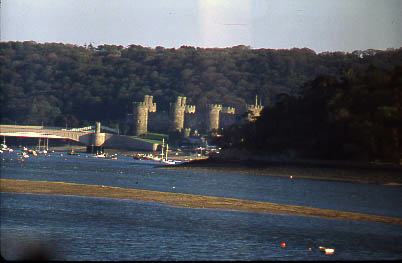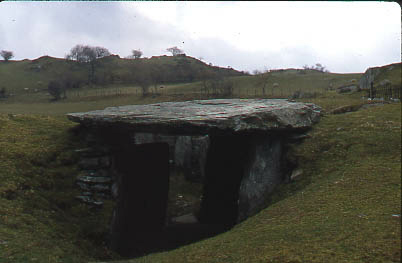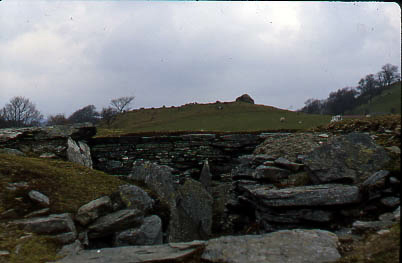|

Conway (Conwy) Castle, at the mouth of the River Conway (Afon Conwy) in North Wales.
The castle is a good example of the superb engineering of the late 13th century. Its
building was ordered by Edward I after he defeated the Welsh prince Llewellyn in 1282. The
castle is built in the shape of a Welsh harp. Note the hill in the foreground, which
enemies thought would shield an approach from the sea and up the river. It didn't; the
south-western tower of the castle was cleverly positioned on a small rise so that the
lookout could see round the back of the hill, out to sea. The castle was therefore always
ready for any invaders, and was never taken by surprise.
To the left of the castle you
can see the suspension bridge over the Conwy, built by Thomas Telford in the 19th century
as part of the road links from England to the ferry port at Anglesey. |

This is a Neolithic burial chamber at an ancient site in North Wales. Many thousands
of years after this was built, the site was adopted by Germanus, who built a Christian
chapel nearby in around AD429. The site is known as Capel Garmon, which is Welsh for the
Chapel of Germanus.

Neolithic (stone age) people lived in Britain for many thousands of years before the
arrival of the Celts, let alone the Romans. They left many striking remains. Most consist
of tombs, but some are dolmen (standing stones) or mystic sites (Stonehenge, Avebury). The
other legacy these early people left is invisible today - they, together with the Ice Age,
were responsible for cutting down a lot of Britain's forests. Wales is blessed with a
particularly high proportion of neolithic sites, pointing to the area as having been of
great importance from very early times. |